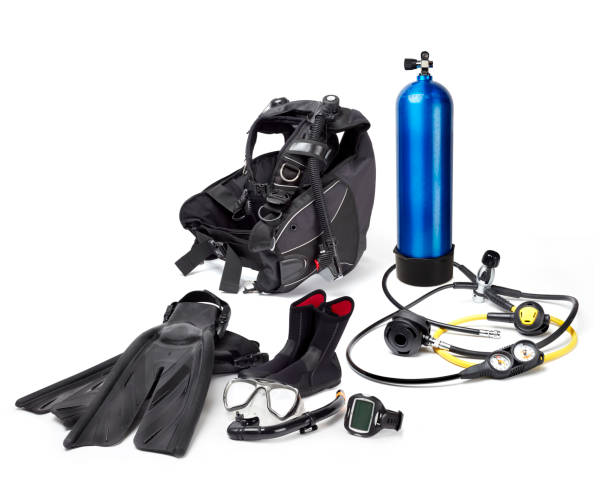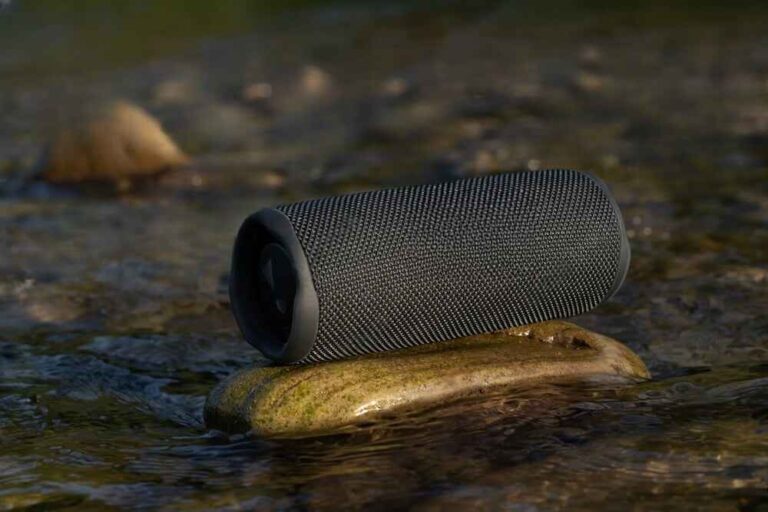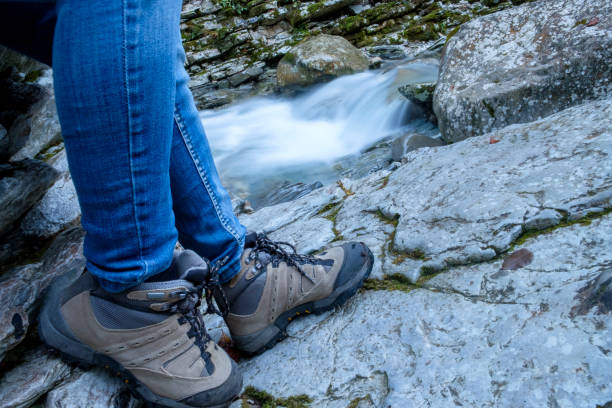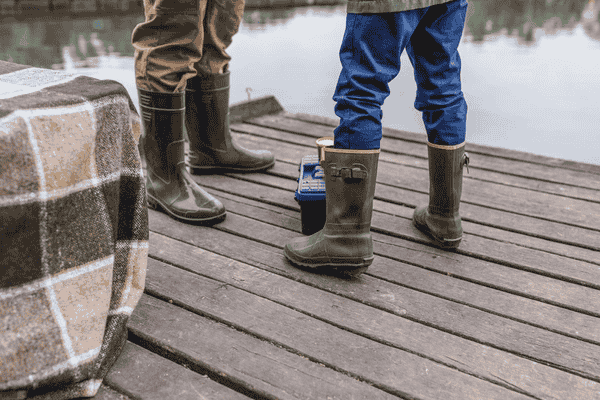The Ultimate Guide to Choosing the Best Scuba Gear

Choosing the right scuba gear is essential for a safe and enjoyable diving experience. With so many options available on the market, it can be overwhelming to know where to start. Whether you’re a seasoned diver looking to upgrade your equipment or a newbie venturing into the underwater world for the first time, this ultimate guide has got you covered.
From wetsuits to regulators, fins to masks, we’ll break down everything you need to consider when selecting the best scuba gear for your needs. With our expert tips and recommendations, you’ll be well-equipped to dive in with confidence and make the most of your underwater adventures.
Key Highlights
- Discover the essential scuba gear needed for a safe and enjoyable diving experience.
- Learn how to choose the right scuba gear based on your diving environment and experience level.
- Find out about the top brands and factors to consider when selecting scuba gear.
- Understand the significance of weight considerations and how they impact your diving performance.
- Explore the 120 rule in scuba diving for ensuring safety during your underwater adventures.
Essential Scuba Gear
These are the key items you you will need:
Mask and Snorkel

Importance of a Good Mask:
Your mask is your window to the underwater world. It’s essential that it fits properly, so you get a good seal on your face. A well-fitted mask ensures comfort and prevents leaks. Nobody wants to be constantly adjusting their mask mid-dive.
Look for a mask with tempered glass lenses for safety and clarity, as well as a soft silicone skirt that molds to your face. We recommend the Scubapro Spectra Mask for its wide field of vision and comfort. Also, consider the type of lens. Single lenses offer a wider view, while dual-lens masks give you more flexibility if you wear prescription lenses.
Choosing a Snorkel:
While a snorkel isn’t as critical for deeper dives, it’s an essential tool for surface swimming or when you need to conserve air. It allows you to breathe easily without having to lift your head out of the water. Consider the comfortable and functional Scubapro Snorkel for hassle-free surface dives.
There are two main types: a traditional “J” style and a newer, more streamlined “dry” snorkel, which has a valve to keep water out. When choosing a snorkel, consider comfort and ease of use, especially for extended surface swims. A mouthpiece with a comfortable fit will make all the difference.
Fins

Different Types of Fins:
Fins are crucial for efficient movement in the water. The two main types are open-heel fins, which allow you to wear dive boots for extra comfort and protection, and full-foot fins, which are perfect for warmer waters when you can dive barefoot. When choosing between paddle fins (the traditional design) or split fins (which are designed for efficiency with less effort), think about your diving style. Paddle fins provide more power for stronger kicks, while split fins offer a more effortless glide. We recommend the Mares Avanti Quattro+ Fins for their power and comfort.
Choosing the Right Fins:
Comfort is key here! The fins should fit snugly but not be too tight, and they should be lightweight enough to allow easy movement while still being durable. Material is important too. Rubber or composite fins tend to be more durable and offer great propulsion, while plastic fins are lighter but may not be as effective for deeper or more strenuous dives. Look for the Mares Avanti Quattro+ Fins to ensure great propulsion without tiring you out.
Wetsuits, Drysuits, and Rash Guards

Wetsuits:
For most recreational divers, a wetsuit is the go-to option, particularly in tropical or temperate waters. Wetsuits come in varying thicknesses (measured in millimeters), with thicker suits offering more insulation for colder waters. Check out this Cressi Wetsuit for a reliable option that balances warmth and flexibility. If you’re diving in warmer locations, a thinner wetsuit or even a rash guard might be enough. The key is finding the right balance of warmth and flexibility, which will allow you to enjoy your dive without feeling restricted.
Drysuits:
If you’re diving in colder waters, a drysuit is a must-have. Drysuits keep you completely dry by creating an airtight seal, which means they offer superior warmth. Consider this high-quality Aqualung Drysuit to keep you comfortable even in freezing conditions. Though they’re a bit more challenging to master than wetsuits, they are essential for dives in places where water temperatures dip below 50°F (10°C).
Rash Guards:
For warm-water divers, rash guards or dive skins offer protection from sunburns, jellyfish stings, and abrasions. They’re lightweight, comfortable, and great for keeping you protected in tropical climates. While they don’t provide thermal protection, they’re great for casual divers who don’t want the bulk of a full wetsuit. Take a look at Mares Rash Guards for excellent sun protection during your tropical dives.
Buoyancy Control Device

What is a BCD?
Your BCD (Buoyancy Control Device) is one of the most important pieces of gear you’ll use underwater. It helps you maintain neutral buoyancy, so you can float easily or hover without effort. We suggest the Scubapro Hydros Pro for its comfortable fit and intuitive operation. With the right BCD, you won’t be constantly struggling to stay at the right depth.
Types of BCDs:
There are three main types of BCDs: jacket-style, which provides a more traditional, comfortable fit and great flotation; back-inflate, which is streamlined and better for those who prefer more freedom of movement; and hybrid BCDs, which combine features from both. Each has its advantages, depending on your diving style and comfort preferences.
What to Look for in a BCD:
Look for a BCD with a good fit. Too tight and it’ll be uncomfortable, too loose and it won’t perform well. Adjustable straps, pockets for storage, and extra features like integrated weight systems can add convenience, but make sure the BCD is easy to use and suits your diving needs. The Scubapro Hydros Pro fits the bill perfectly for easy adjustments and storage solutions.
Regulator

How a Regulator Works:
The regulator is the heart of your scuba system. It delivers air from your tank to you while you’re underwater. A high quality regulator is crucial for maintaining an effortless, reliable air supply as you dive deeper. The Mares Abyss 22 is an excellent choice for consistent performance.
Types of Regulators:
There are two main types: single hose regulators, which are more traditional, and double hose regulators, which offer a vintage feel and a different diving experience. The Scubapro MK25 EVO is a top choice for single hose options designed for performance at various depths. Most divers opt for a single hose, but if you’re looking for a specific style or efficiency, the double hose might appeal to you.
Important Features:
When choosing a regulator, look for one that’s easy to breathe from, has a reliable second stage (the part in your mouth), and performs well at various depths. The Mares Abyss 22 is known for its smooth breathing and durability. Keep in mind that ease of use and performance in colder water (if you’re diving in chilly environments) are important factors. The regulator should also be compatible with your tank.
Dive Computer

Why You Need a Dive Computer:
A dive computer is one of the most important pieces of safety equipment you’ll use. It tracks your depth, dive time, and no-decompression limits, helping you avoid dangerous situations like decompression sickness. It’s much easier (and safer) than relying on traditional dive tables. The Suunto Zoop Novo is a user-friendly option suitable for divers of all skill levels.
Features to Look for:
When choosing a dive computer, look for a clear, easy-to-read display and multi-gas capabilities if you’re planning on diving with mixed gases. Features like an alarm system for rapid ascents and logbook functions to keep track of your dives are also helpful.
Tank

When you are picking the best scuba gear, the tank is an important part. Think about things like the tank material, which is usually aluminum or steel, how much air it holds, and the type of valve. Aluminum tanks are light but can get damaged easily. Steel tanks are heavier but last longer. There are two valve choices: yoke and DIN. DIN is better for technical diving. It is also important to keep your tank well-maintained and checked regularly to dive safely. Check out brands like Aqua Lung for reliable options tailored to your diving style. Choose a tank that fits your diving style and the places where you dive.
Accessories
Protective Footwear and Gloves:
Comfort is key for your feet and hands. A good pair of dive boots will keep your feet warm, especially when diving in colder waters or when navigating rocky shores. Gloves are also essential for protecting your hands from cuts, stings, and cold temperatures.
Dive Bags:
A durable dive bag helps you keep your gear organized and easily transportable. You want one with enough space for all your equipment and compartments to keep things organized. Make sure it’s made of strong material that will stand up to wear and tear, especially if you’re traveling often.
Other Accessories:
Things like dive lights, knives, and whistles can be life-saving in emergency situations or just handy for navigation and visibility. Consider adding them to your gear collection, especially if you’re planning night dives or exploring deep wrecks.
How to choose the Right Gear for Your Needs
Choosing the right scuba gear isn’t just about picking the most expensive or the most popular brands. It’s about selecting gear that suits your diving environment, your experience level, and your specific preferences. After all, every diver’s needs are different. So let’s walk through some important factors to help you make informed decisions based on where and how you’ll be diving.
Assessing Your Diving Environment
The first step in choosing your gear is understanding where you’ll be diving most often. Are you planning on exploring the warm, crystal-clear waters of a tropical reef, or are you gearing up for cold-water dives in deeper, murkier conditions? These environmental factors play a huge role in the gear you need.
For example, if you’re diving in warmer waters, you might not need a thick wetsuit or drysuit. A rash guard or a thin wetsuit might do the trick. On the other hand, cold-water diving requires thicker wetsuits or drysuits to keep you warm and comfortable. The visibility of the water also impacts the type of mask you choose—clearer waters may allow you to go with a mask that offers a wider field of vision, while murky waters might call for a mask that provides a better seal to keep out water.
In short, think about water temperature, visibility, and depth to guide your gear choices. Your mask, wetsuit, and dive computer should all be matched to the conditions you expect to encounter. Knowing your diving environment can save you time and ensure you’re fully prepared.
Your Diving Experience
Your level of experience is another key factor to consider. Beginners and seasoned divers have different gear needs, and selecting the right equipment can make or break your experience underwater.
If you’re just starting out, comfort and ease of use should be your top priorities. Look for gear that is simple to use, reliable, and won’t overwhelm you. For instance, a beginner might prefer a BCD with a more traditional jacket-style design, which offers extra flotation and is easier to adjust. Also, a more user-friendly regulator with excellent breathing ease at shallow depths will give you confidence as you get used to the underwater world.
For experienced divers, gear preferences often lean toward more specialized equipment. For example, seasoned divers might want a more streamlined back-inflate BCD for increased maneuverability or a dive computer with advanced features like multi-gas capabilities for technical dives. You might also prefer a more compact, durable mask or fins designed for efficiency on longer dives.
Weight Considerations
Let’s not forget about the logistics of traveling with your gear! Weight and portability are big considerations, especially if you’re traveling to different dive spots or planning a dive trip. You want your gear to be durable, but also lightweight enough to pack and carry comfortably.
For example, if you’re a frequent traveler, you might want to choose lighter gear that’s still strong and effective—think compact fins, lightweight regulators, and a travel-friendly dive bag that doesn’t weigh you down. If you’re diving locally and don’t need to carry your gear far, then weight might not be as big a concern. But if you’re hopping on a plane, consider how much gear you’ll need, the size of your bags, and if there are any restrictions on weight.
The good news is that many brands now design “travel” versions of scuba gear, so you don’t have to sacrifice performance for portability. These pieces are lighter and more compact, making them easier to take on your next dive trip.
Top Scuba Gear Brands and Products
Choosing the right brand your scuba gear can make a huge difference in both the quality and reliability of your equipment. With so many options out there, it can be a bit overwhelming, but don’t worry. We’ve got you covered. Let’s dive into some of the top scuba gear brands and recommend a few products that are well-loved by divers worldwide.
Best Overall Scuba Gear Brands
- Scubapro
Scubapro is one of the most trusted names in the diving world. Known for its top-quality, durable gear, they offer everything from masks and fins to regulators and BCDs. If you’re after high-performance equipment, Scubapro is always a safe bet. - Mares
Another big player in the scuba industry, Mares has been around for decades and is well-known for making reliable and affordable gear. Whether you’re a beginner or a seasoned diver, Mares has something for you, including fins, wetsuits, and dive computers. - Aqualung
Aqualung has been designing innovative dive equipment for over 70 years. They’re famous for their BCDs, regulators, and wetsuits that blend comfort, performance, and safety. Many divers swear by Aqualung for both recreational and professional diving. - Cressi
If you’re looking for value and quality, Cressi is hard to beat. They offer a wide range of scuba gear at more affordable prices without compromising on performance. Cressi is especially well-loved for its masks, snorkels, and fins.
Top Recommended Scuba Gear Products
Now that we’ve covered some top brands, let’s take a look at specific products that stand out in their categories:
- Best Mask: Scubapro Spectra*
If you’re looking for a mask that offers fantastic visibility and comfort, the Scubapro Spectra is a great choice. It features a wide field of vision and a super-soft silicone skirt, making it comfortable for long dives. Plus, it’s available in multiple colors for a bit of style. - Best Fins: Mares Avanti Quattro+
These fins are perfect for divers who want power without sacrificing comfort. The Mares Avanti Quattro+ fins use advanced materials to give you better thrust with less effort, ideal for long dives in strong currents. - Best BCD: Scubapro Hydros Pro
The Aqualung i3 BCD is perfect for those who want a smooth, intuitive diving experience. Its easy-to-use inflator system gives you better buoyancy control, and the comfortable fit ensures you’ll be at ease throughout the dive. - Best Regulator: Mares Abyss 22
If you’re looking for a regulator that delivers incredible performance in even the most challenging conditions, the Mares Abyss 22 is a solid choice. It’s known for its smooth breathing and rugged durability, making it perfect for both beginners and advanced divers. - Best Dive Computer: Suunto Zoop Novo
The Suunto Zoop Novo is a user-friendly dive computer that’s perfect for beginners but still has plenty of features for seasoned divers. It provides real-time data on your depth, time, and decompression status, helping you dive with confidence.
Budget Options vs. High-End Gear
Let’s be real: scuba diving gear can get pricey. But don’t worry. You don’t have to break the bank to get good quality gear. There’s a wide range of options, from budget-friendly gear to premium, high-performance equipment.
- Budget-Friendly Gear:
If you’re just starting out or diving on a budget, there are plenty of affordable brands and models that provide great value. Cressi, for example, offers masks, fins, and snorkels at a great price, without skimping on quality. Mares also has some budget options that perform well for recreational divers. - High-End Gear:
On the other hand, if you’re a seasoned diver or looking for the best performance, premium brands like Scubapro and Aqualung are where you’ll find top-of-the-line equipment. These are the brands that professionals and serious enthusiasts rely on for durability, performance, and comfort.
Frequently Asked Questions
What’s the best brand for scuba gear?
When you talk about scuba gear, brands like Cressi, Aqua Lung, and Scubapro stand out for their quality and trustworthiness. They have a variety of products for divers at every skill level.
What scuba gear do navy SEALs use?
Navy SEALs use special scuba gear made for their missions. This includes high-quality masks, fins, dive computers, and regulators. Their equipment helps them last longer and move quietly in tough underwater places.
What is the 120 rule in scuba diving?
The 120 rule in scuba diving says that divers should go no deeper than 120 feet and stay there for no more than 2 minutes. This guideline helps keep divers safe by lowering the chance of decompression sickness. It makes the diving experience safer for everyone.
Is Tom Cruise scuba certified?
Tom Cruise is certified to scuba dive. He loves diving and is often seen exploring the underwater world. This certification shows his adventurous spirit and his love for the ocean.
* Voyedy may receive compensation for purchases made at participating retailers linked on this site. This compensation does not affect the products displayed or their order. Learn more here.





